— By Amy Mandelbaum, New York Sea Grant's Long Island Sound Outreach Coordinator; Barbara Branca, NYSG's Communications Manager
Stony Brook, NY, November 26, 2014 - In Fall 2014, formal and informal educators from all along New York’s Long Island Sound coastline learned about Long Island Sound topics of marine debris, geology, and climate change through hands-on teacher workshops. These workshops were coordinated by New York Sea Grant’s Long Island Sound Study Outreach Coordinator for New York, Amy Mandelbaum.
Each workshop had a field trip component to engage teachers and a
follow-up activity that can be linked to New York State Science Learning
Standards.
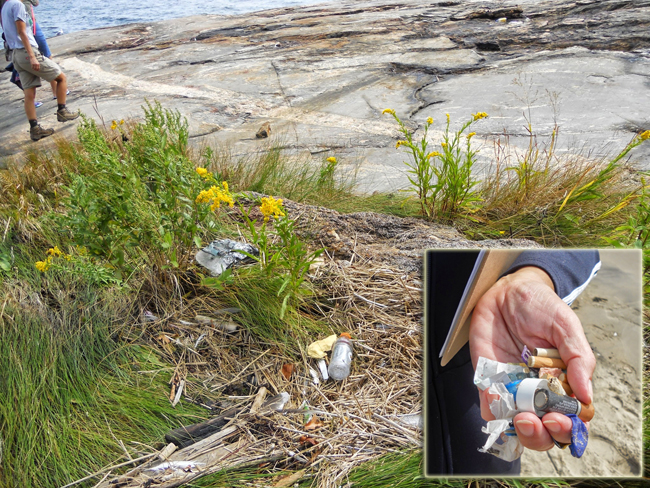
The first of these Saturday workshops was held at Pelham Bay Park in the Bronx, where the attendees learned how to conduct a NOAA Marine Debris Shoreline Survey. With stakes to mark off survey areas, the teachers used checklists to classify the debris that was found washed up along the shoreline (seen above). They also learned how to teach students about marine debris through art by making decorative objects out of recycled debris. All Photos (unless otherwise specified): Amy Mandelbaum, NYSG/LISS.
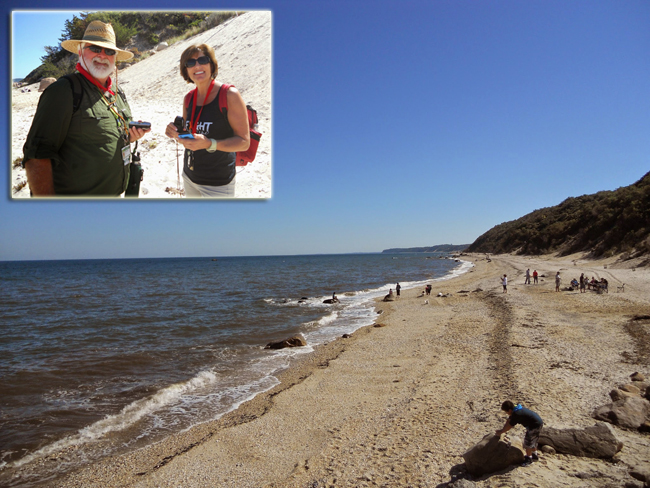
Torie Hehir (seen above, at right, in inset picture, along with fellow Long Island Sound Mentor Teacher Robert Mozer), discussed with the workshop attendees the different types of geologic formations that you can find along the Sound.
At a second workshop, held farther east at Wildwood State Park in Wading River, another group of attendees learned about the formation of Long Island and how to classify the boulders strewn along the north shore that attest to the island’s glacial origin. Hiking through the maze of large glacial “erratics,” the teachers measured and then calculated the roundness or “sphericity” of the boulders. This activity was conducted by experienced educators from GORP: the Geo-sciences Outdoor Research Program.
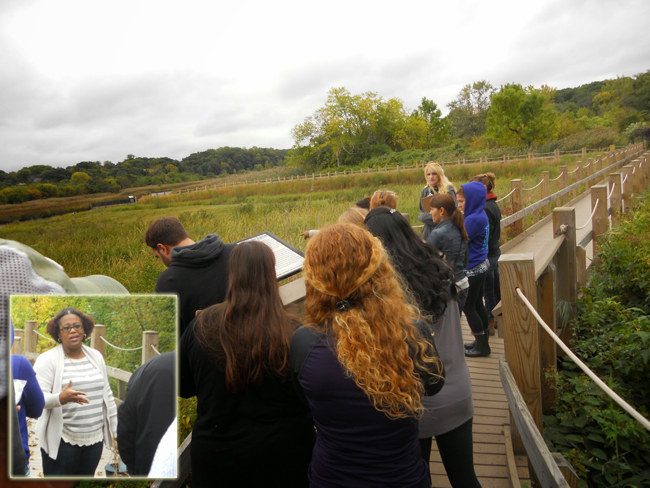
An Alley Pond environmental educator gives the workshop attendees a tour of the Alley Pond salt marsh.
The final fall workshop held at Alley Pond Environmental Center in Douglaston, Queens, was attended by middle school teachers from NYC Board of Education. They learned about the salt marsh at Alley Pond Park and how it plays an important role in reducing climate change by sequestering and storing carbon. Speakers included educators at Alley Pond Environmental Center as well as Jason Krumholz, aka “Dr. K,” the NOAA Liaison to the Long Island Sound Study. The attendees learned how to incorporate the carbon cycle and other climate science concepts into their curricula and have been tasked to complete a climate change activity with their students by the end of the year.
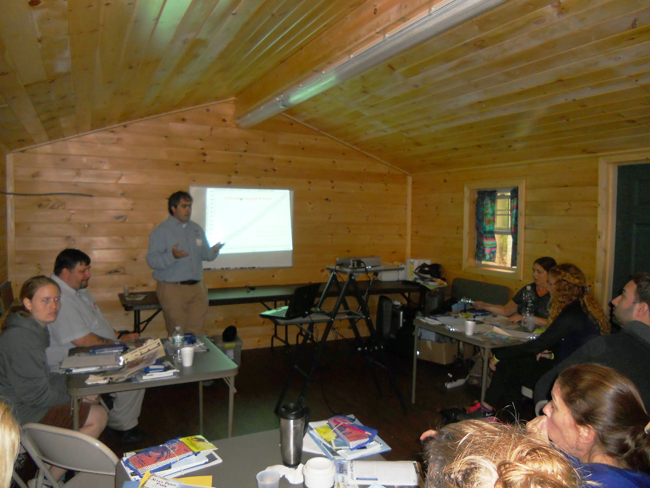
Jason Krumholz, aka "Dr. K," NOAA Liaison to the Long Island Sound Study, provides the attendees with an overview of climate science concepts.
Said one teacher, “The climate change lecture gave me some new information, ideas for ways to address climate change in the classroom, and awesome visuals!”
Hands down, these three hands-on workshops garnered high praise from the 30 participating teachers, who ranged from student teachers to those with over 20 years of experience. According to the program evaluations, participants indicated that they intend to incorporate the ideas, concepts, and Long Island Sound materials into their classrooms. They were also able to receive professional development hours for participating.
These Long Island Sound Mentor Teacher program workshops were sponsored by New York Sea Grant (NYSG) and Long Island Sound Study (LISS), with additional support from the New York State Marine Educators Association (NYSMEA) for the marine debris and climate change workshops.
Additional Photos from each of the Mentor Program Workshops ...
Marine Debris LISMT workshop (September 20, 2014)
Pelham Bay Park, Bronx, NY
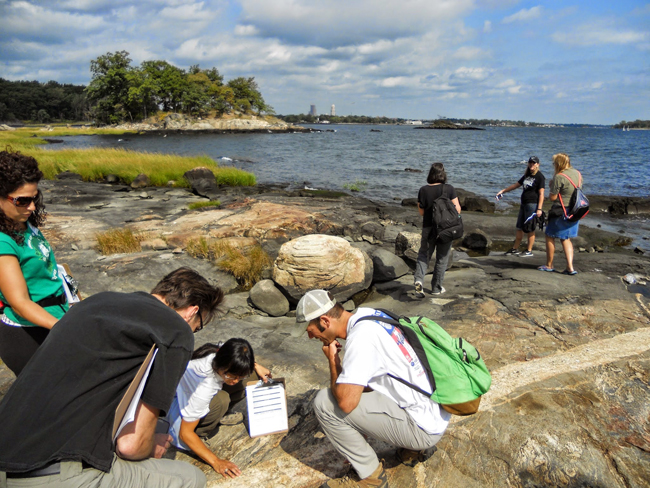
During the workshop, teachers learned how to conduct a marine debris shoreline survey.
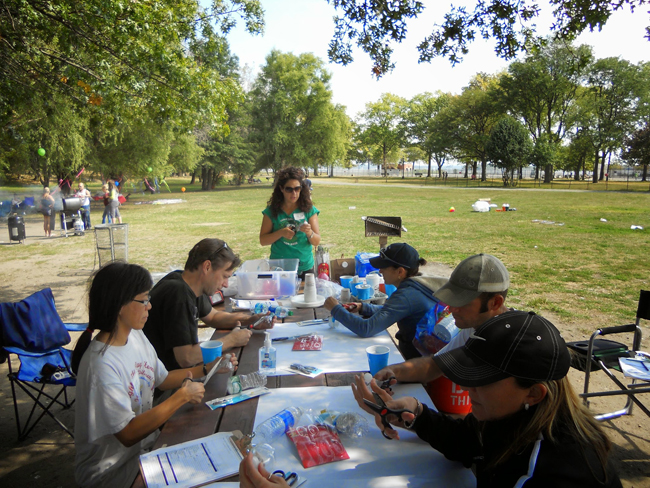
Teachers were also shown by Long Island Sound Mentor Teacher Jennifer Porcheddu (seen above at head of table; also seen below) how marine debris can be reused as part of an art project.
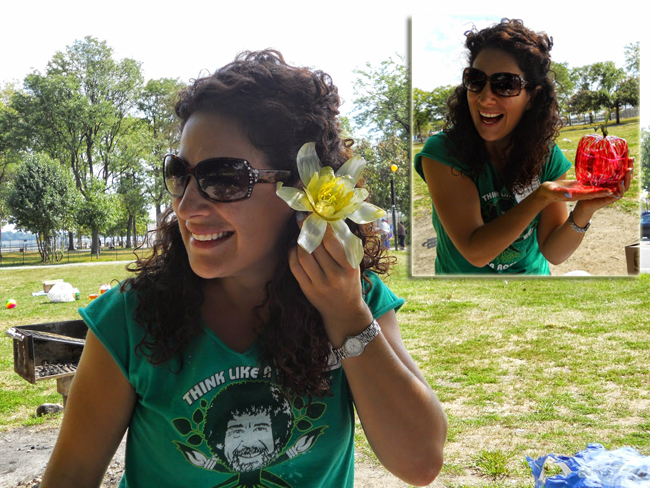
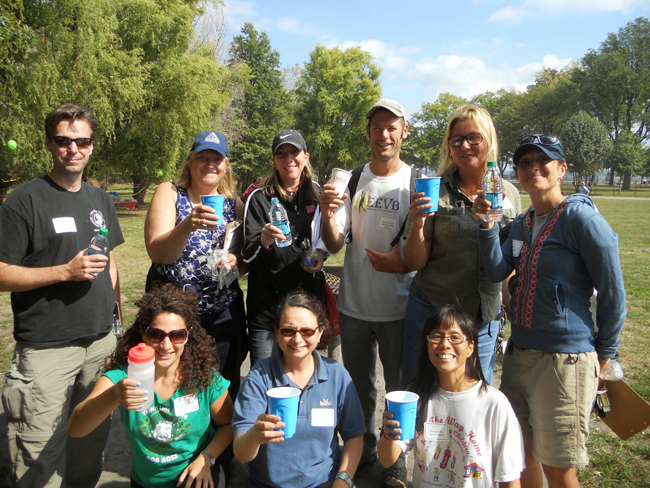
A “Toast to the Coast” was made in celebration of the 26th annual
National Estuaries Day at the workshop. The Long Island Sound Study —
for which New York Sea Grant supports an
outreach coordinator, Amy Mandelbaum (pictured above, in blue polo shirt, bottom row), at Stony Brook University — is part
of a network of 28 National Estuary Programs established by Congress in
1987 that work to improve and restore the nation’s most important
estuaries, the vibrant coastal areas where rivers meet the sea. Photo: Barbara Branca, NYSG.
Geo-sciences Outdoor Research Program LISMT workshop (Sept 27, 2014)
Wildwood State Park in Wading River, NY
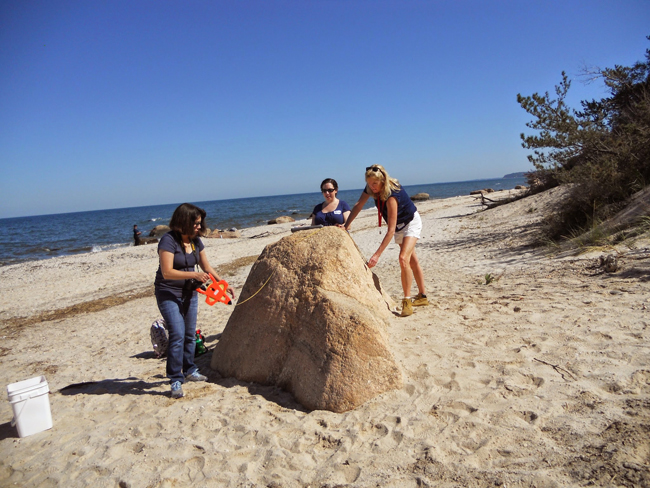
Workshop attendees (seen above and below) learn about the different geologic formations found along the Sound at Wildwood State Park, Wading River. The teachers are seen here measuring, sampling and identifying rocks found on the beach.
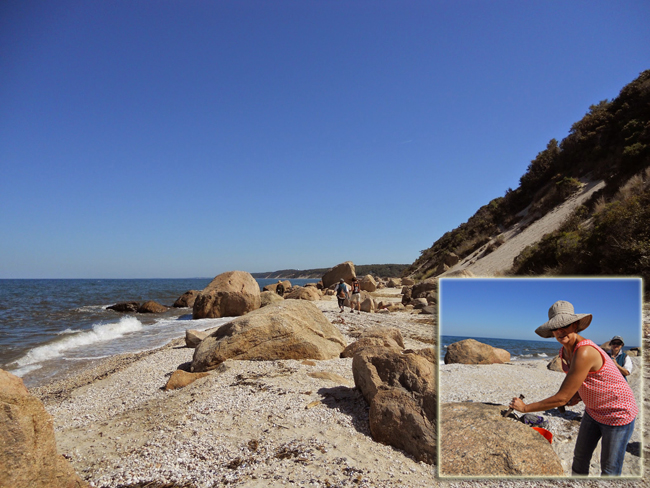
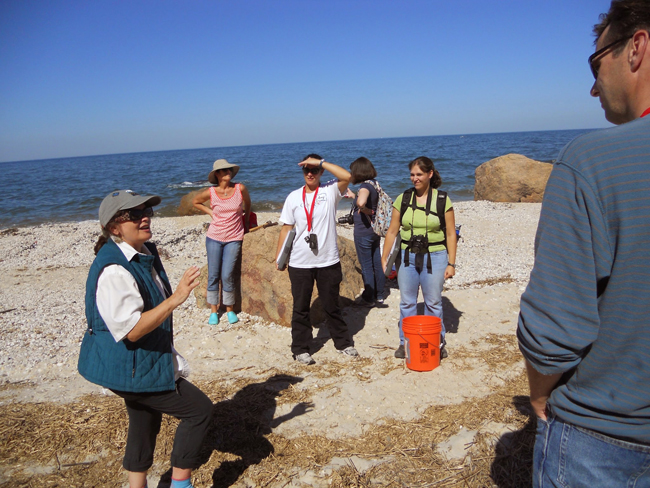
NYSG's Communications Manager Barbara A. Branca joined the educators for this stewardship workshop. Reflecting on her experience, one of the teachers told Branca, "I learned where the rocks on beach came from and another way to classify them. Since I am not Environmental Science certified, this really helped me."
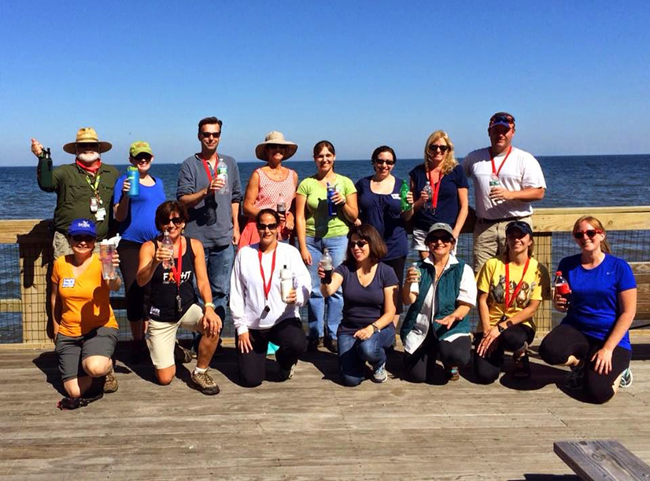
Another “Toast to the Coast” was made in celebration of the 26th annual National Estuaries Day. Photo: Barbara Branca, NYSG.
Climate Change and the Long Island Sound Estuary NYSG workshop (Oct 2, 2014)
Alley Pond Environmental Center in Douglaston, Queens
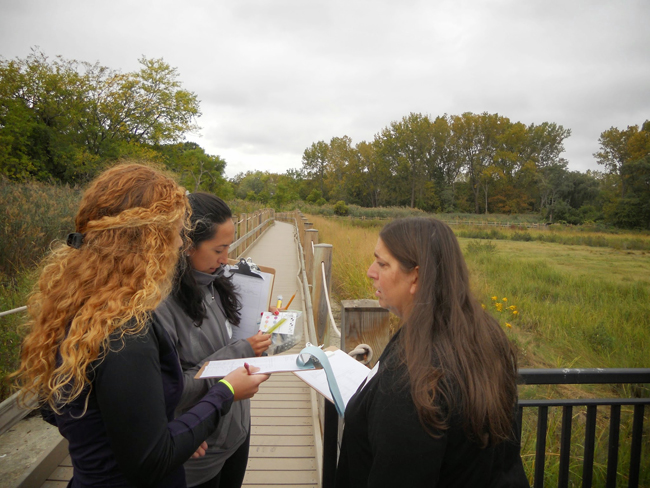
Workshop attendees test the water quality of Alley Pond Creek. Alley
Pond Creek flows into Little Neck Bay, which discharges to Long Island
Sound.
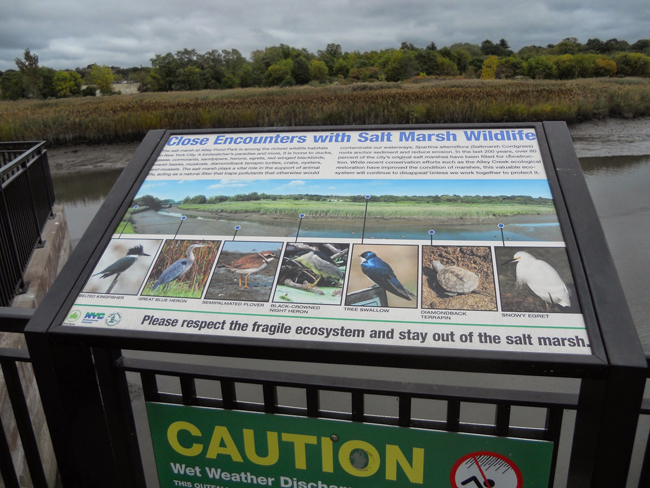
The salt marsh at Alley Pond Park is among the richest wildlife habitats in New York City. A birdwatcher's paradise and more, it is home to ducks, geese, cormorants, sandpipers, herons, egrets, red-winged blackbirds, marsh hawks, muskrats, diamondback terrapin turtles, crabs, oysters and mussels. The salt marsh plays a vital role in the support of animal life, acting as a natural filter that traps pollutants that otherwise would contaminate our waterways.
More Info:
Long Island Sound is one of the 28 nationally-designated estuaries under
the NEP, which was established by Congress in 1987 to improve the
quality of Long Island Sound and other places where rivers meet the sea.
The Long Island Sound Study, conducted under the Environmental
Protection Agency’s (EPA) National Estuary Program (NEP), is a
cooperative effort between the EPA and the states of Connecticut and New
York to restore and protect the Sound and its ecosystems.
For more on what you can do to make a difference, click over to the "
Get Involved" or "
Stewardship" sections of the
Long Island Sound Study's Web site. News on the Long Island Sound Study can also be found in
New York Sea Grant's related archives.
If you would like to receive Long Island Sound Study's newsletter, please visit their site's
homepage and sign up for the "e-news/print newsletter" under the "Stay Connected" box.
For daily updates and tips on how you can help protect and restore Long Island Sound, please join LISS on
Facebook or, sign up for their
RSS feeds.
New York Sea Grant (NYSG), a cooperative program of Cornell University
and the State University of New York, is one of 33 university-based
programs under the National Sea Grant College Program (NSGCP) of the
National Oceanic and Atmospheric Administration (NOAA). The NSGCP
engages this network of the nation’s top universities in conducting
scientific research, education, training and extension projects designed
to foster science-based decisions about the use and conservation of our
aquatic resources. Through its statewide network of integrated
services, NYSG has been promoting coastal vitality, environmental
sustainability, and citizen awareness about the State’s marine and Great
Lakes resources since 1971.
For updates on Sea Grant activities:
www.nyseagrant.org has RSS,
Facebook,
Twitter, and
YouTube links. NYSG also offers a free e-list sign up via
www.nyseagrant.org/coastlines for
NY Coastlines, its flagship publication, which merged with our e-newsletter,
Currents, in 2014 - is published several times a year.